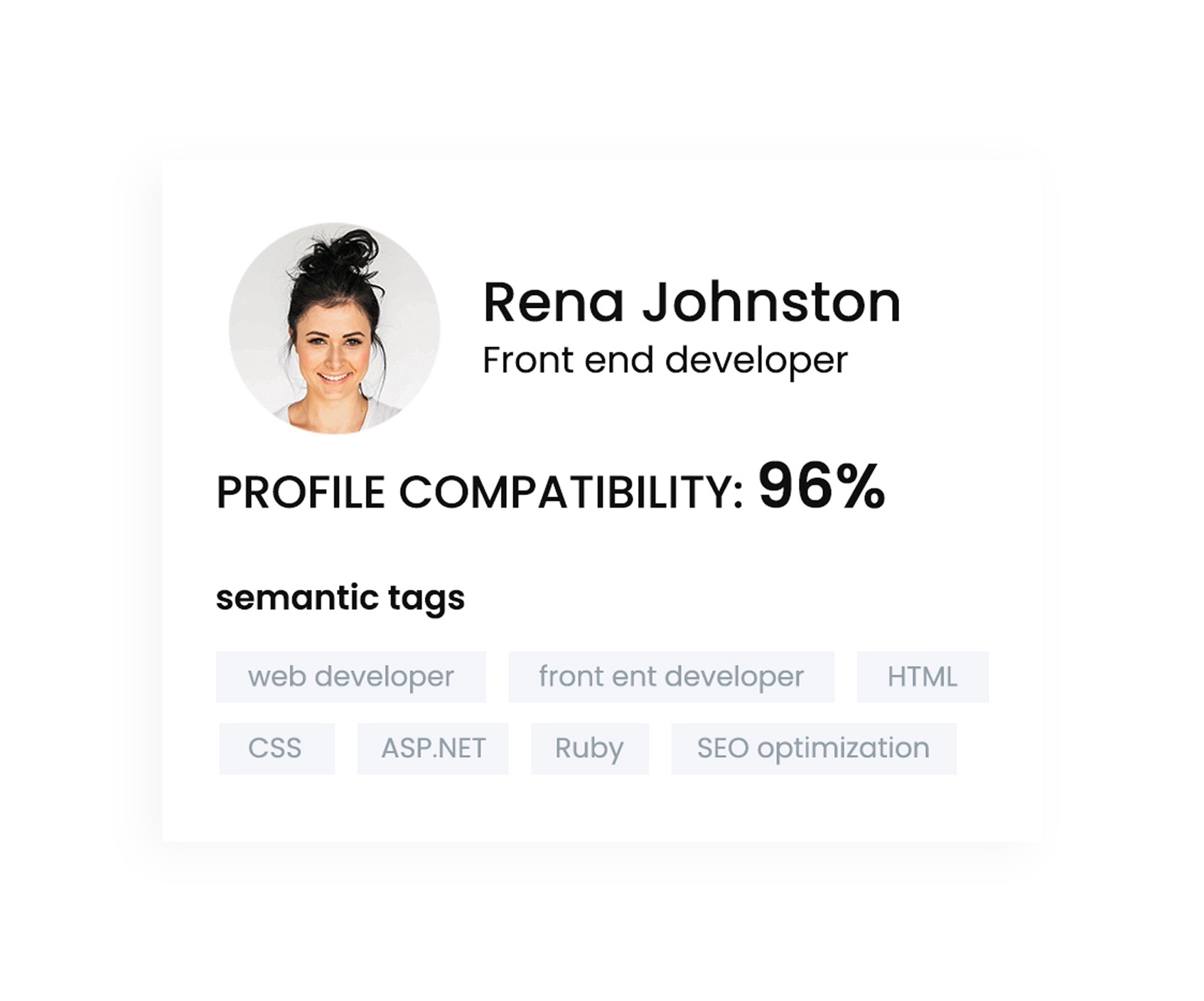
why semantic search
Why do you need a semantic search?
- Talent Shortage makes it increasingly difficult to be able to find the talent you really need quickly
- As for the increase of online application tools, from websites to job portals to social media, recruiters must evaluate hundreds of resumes daily, often with no relevance to the position sought.
book a free demo
Do you want to book a demo with our team to get more information about Skillskan?
Fill out the form to schedule a no obligation demo.


book a free demo
Do you want to book a demo with our team to get more information about Skillskan?
Fill out the form to schedule a no obligation demo.
benefits
What is the aim of semantic search?
Semantic search turns your talent database into an efficient AI candidate sourcing. It reads the skills in CVs, compare them with your research and return an ordered shortlist of candidates based on their percentage of compatibility with the search criteria you have chosen.
The semantic search guarantees a reduction in time-to-hire and allows the company to save time and money.
Today social networks and job portals have such a high performance that HR ends up with a mountain of data to analyze. Semantic search provides support in the management of these data, which are so elevated that they are impossible to be analyzed without using a software.
why do you need a semantic search?
Why do you need a semantic search?
- Talent Shortage makes it increasingly difficult to be able to find the talent you really need quickly
- As for the increase of online application tools, from websites to job portals to social media, recruiters must evaluate hundreds of resumes daily, often with no relevance to the position sought.

benefits
What is the aim of semantic search?
Semantic search turns your talent database into an efficient AI candidate sourcing. It reads the skills in CVs, compare them with your research and return an ordered shortlist of candidates based on their percentage of compatibility with the search criteria you have chosen.
The semantic search guarantees a reduction in time-to-hire and allows the company to save time and money.
Today social networks and job portals have such a high performance that HR ends up with a mountain of data to analyze. Semantic search provides support in the management of these data, which are so elevated that they are impossible to be analyzed without using a software.
main features
The features of semantic search

matching
Ranking candidates according to their compatibility with the search in just a few seconds.

reduction of time and cost-per-hire
The reduction in time achieved is remarkable. The software takes only a few seconds to analyze even thousands of resumes.

vertically-focused semantic search
The strength of our semantic search is that it was created exclusively for the world of HR. Because of this, it integrates seamlessly with the field in which it is applied.

cross-languages
It guarantees a perfect matching between your research and candidates’ CVs, even when they are written in different languages.

multilingual
The semantic search is available in Italian, English, French, German, Spanish, Portuguese.

notification system
It allows creating a set of alerts to improve candidates experience

filters
You can add or remove filters to find the perfect candidate.

security & GDPR compliance
We take care of the privacy of candidates’ information and our infrastructure ensures the security of managed data.

APIs & ATS integration
Easy connect your ATS tool with our AI recruitment tools. REST integration available.
use cases
Why do our customers use semantic search?
how it works
How semantic search works?
Our semantic search goes beyond the individual words written in a CV and understands their true meaning to speed up the pre-screening phase of the selection process.
It is based on a semantic engine containing over 12,000 jobs, identified and weighted to lead our software in identifying the most appropriate jobs.
The algorithm carries out an extraction of the professional tags contained in the search, then compares them with the skills in the candidates’ CVs.
It results in a list of candidates ordered from the most to the least suitable for the search.
how it works
How semantic search works?
Our semantic search goes beyond the individual words written in a CV and understands their true meaning to speed up the pre-screening phase of the selection process.
It is based on a semantic engine containing over 12,000 jobs, identified and weighted to lead our software in identifying the most appropriate jobs.
The algorithm carries out an extraction of the professional tags contained in the search, then compares them with the skills in the candidates’ CVs.
It results in a list of candidates ordered from the most to the least suitable for the search.

